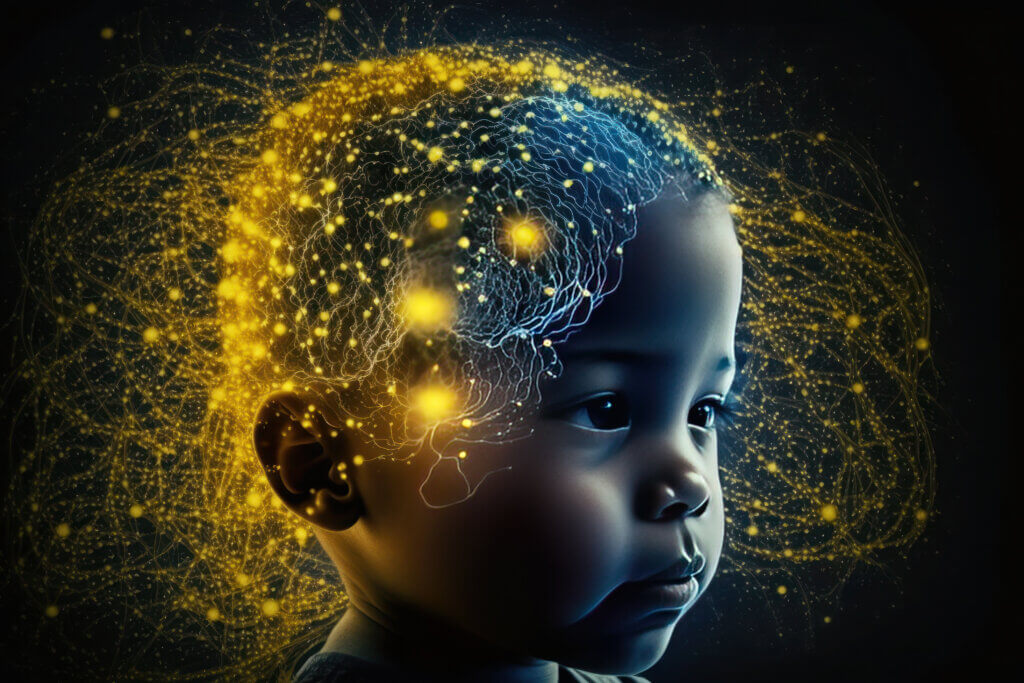When people say you have a big head, blame your brain. In a fascinating new study, researchers have discovered that people born in more recent decades have larger brain volumes compared to those born in earlier decades. This finding suggests that the human brain may be developing more robustly over time, potentially due to improvements in early life environment and health.
The study, published in the journal JAMA Neurology and led by Dr. Charles DeCarli from the University of California-Davis, analyzed brain scans of 3,226 participants born between 1930 and 1970. Researchers measured various aspects of brain structure, including the size of the cranium (intracranial volume), the volume of gray and white matter, and the thickness of the cerebral cortex.

They surprisingly found that individuals born in later decades had significantly larger intracranial volumes, white matter volumes, and hippocampal volumes compared to those born in earlier decades. The hippocampus is a crucial brain region involved in learning and memory. Additionally, the surface area of the cerebral cortex, the brain’s outer layer responsible for higher cognitive functions, was also larger in those born more recently.
To put these findings into perspective, the difference in intracranial volume between someone born in the 1930s and someone born in the 1970s was about 6.6 percent. That’s a substantial increase, considering that the human brain reaches its maximum size in early adulthood and doesn’t continue to grow thereafter.
“The decade someone is born appears to impact brain size and potentially long-term brain health,” says Dr. DeCarli, the study’s first author and distinguished professor of neurology and director of the UC Davis Alzheimer’s Disease Research Center, in a media release. “Genetics plays a major role in determining brain size, but our findings indicate external influences — such as health, social, cultural and educational factors — may also play a role.”
So, what could be driving these remarkable changes in brain structure across generations? Researchers believe that improvements in early life environment, such as better nutrition, health care, and education, may be playing a key role. These factors are known to have a significant impact on brain development during the critical periods of infancy and childhood.

The study also found that the thickness of the cerebral cortex was actually thinner in those born in later decades. While this might seem counterintuitive, it’s actually consistent with the concept of “gyrification” — the folding of the brain’s surface to increase its surface area without substantially increasing its volume. This process allows for more efficient packing of neurons and faster communication between brain regions.
The findings of this study have implications for understanding cognitive reserve — the brain’s resilience against age-related decline and diseases like Alzheimer’s. Larger brain volumes and more robust brain structures may provide a buffer against the effects of neurodegeneration, allowing individuals to maintain their cognitive abilities for longer.
It’s important to note that this study was conducted in a largely white, middle-class population from Massachusetts, so the results may not be generalizable to all populations. Socioeconomic disparities and other factors can significantly influence brain development, and future research should aim to include more diverse samples.
Nevertheless, this study provides compelling evidence that the human brain is not static across generations. As our living conditions, nutrition, and access to health care and education continue to improve, our brains may be reaping the benefits.
“Larger brain structures like those observed in our study may reflect improved brain development and improved brain health,” notes Dr. DeCarli. “A larger brain structure represents a larger brain reserve and may buffer the late-life effects of age-related brain diseases like Alzheimer’s and related dementias.”

What can we take away from these findings? First and foremost, they underscore the importance of investing in early life experiences. Ensuring that children have access to good nutrition, health care, and education is not only essential for their immediate well-being but may also have long-lasting effects on their brain development and cognitive resilience later in life.
Additionally, these findings provide a glimmer of hope in the fight against age-related cognitive decline and dementia. While we still have much to learn about preventing and treating these conditions, knowing that our brains may be getting better equipped to handle them is encouraging.








-392x250.jpg)




Because the utilization rate has increased?